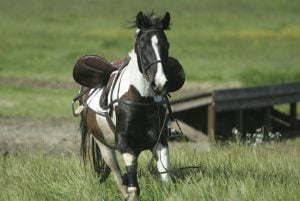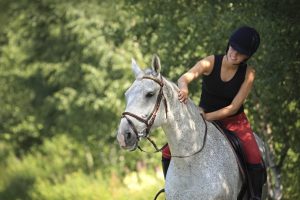Have you made an involuntary dismount recently? If so, have you posted pictures of your bruises all over social media, or laughed it off?
Falls are never a laughing matter, even if you manage to raise a smile – as did showjumping legend John Whitaker. It’s great that John could joke about his crashing departure from Cassinis Chaplin in the Longines Global Champions Tour and rather ironic that the horse is named after the funny man of silent films. But we can only imagine how he must have felt when, in the first few minutes after he hit the ground, he couldn’t feel his feet. Not the ideal way to spend your 62nd birthday – and anyone who claims John is too old to stay at the top of his sport is talking out of an unmentionable part of their anatomy.
Fortunately, John was given the all-clear. Hard on his heels came another legend, Olympic eventing medallist and cross-country course designer Ian Stark. More than a year after a horse he was riding fell over backwards, Ian discovered that doctors had misdiagnosed a serious pelvic injury and he had to undergo complicated surgery.
It’s a fact of life that if you ride, you’ll fall off or be ejected. The odds are that the better you are, the greater the likelihood that the fall will be potentially serious. We lesser mortals sometimes have trouble reconciling our centre of gravity with a horse’s, but riders who seem to have built-in seatbone adhesive rarely lose it. When they do, it tends to be in a big way.
So what can we do to minimise the risks, accepting that we’ll never abolish them? The first essential, says a friend who has broken in and produced more horses than I’ve had hot dinners, is to accept that it’s fine to be brave, but stupid to be foolhardy. When she takes on a member of staff as resident CTD (crash test dummy: a sense of humour is the second essential) she doesn’t want someone who claims he or she will get on anything and never think twice about it.
What she looks for is a rider who appreciates her ability to ‘read’ horses and knows that if she says it’s fine to take the next step, it will be. Her current CTD is lightweight and as flexible as a rubber band. He’s also happy to listen to her, respects her judgement and loves horses. Magic.
The third essential is to not be stupid. It might be tempting to ride without a hat, but please think again. I interviewed a neurosurgeon who said his pet hate was women who rode without hats because wearing a hard hat messed up their hair. “If they think that looks bad, they should see what a woman looks like when her hair’s been shaved off and I’m going through her skull to relieve the pressure,” he said.
Give yourself permission to be cautious. Call it risk assessment, weighing up the situation, whatever you like. Being a confident rider also means having the confidence to use your common sense and, when necessary, change your plans. If your horse comes out of the stable like Tigger on springs, lunge him before you ride – it’s what my trainer friend calls “giving them a spin”. If his regime changes, check his diet and remember that you should feed according to the work done, not according to the work you’d like to do.
If nutritional support helps, ignore those who scoff and say the benefits are all in your mind. When you’ve done everything you can, accept that no one goes through their riding life without buying a piece of ground occasionally – and follow John Whitaker’s example by getting back in the saddle as soon as you sensibly can.



